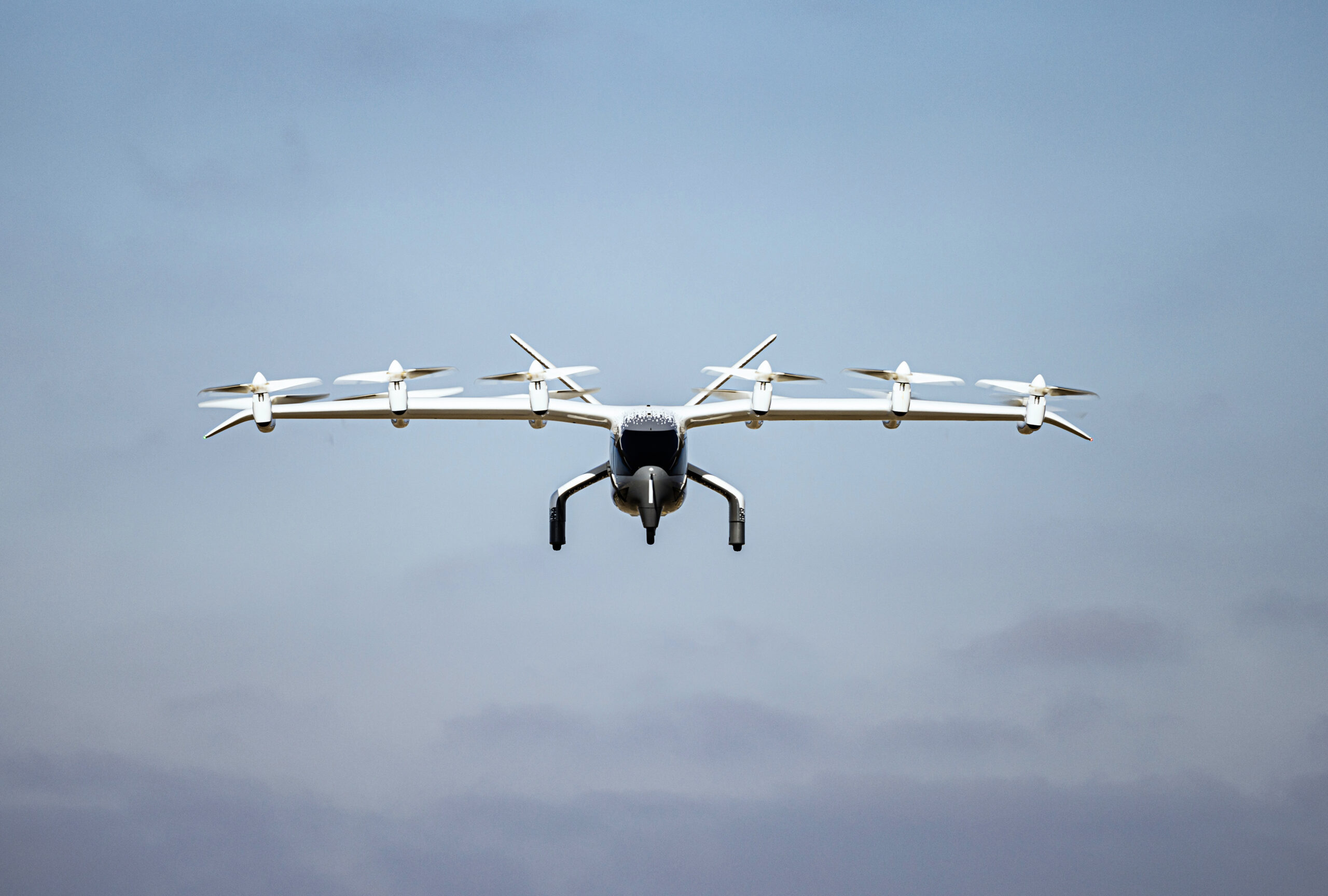Electric vertical takeoff and landing (eVTOL) air taxi manufacturer Archer Aviation has reached what it says is a crucial milestone in its test campaign—one that could prove valuable as it pursues type certification for its flagship Midnight aircraft.
The company on Friday said it successfully completed a series of drop tests on Midnight’s battery packs, an evaluation it will need to complete again during for-credit testing with the FAA. A key step toward type certification for eVTOL designs, for-credit testing allows the regulator to gauge how well an aircraft conforms to its approved specifications.
Archer said it wrapped up the first phase of uncrewed Midnight flight testing in January and intends to begin piloted evaluations later this year. Following the completion of those tests, it will prepare for the FAA’s final exam.
The manufacturer considers the battery pack drop test significant, claiming it is regarded by the electric aviation industry as “one of the most difficult tests to pass for an eVTOL aircraft.”
Midnight’s six lithium-ion battery packs power a dozen electric engines. The aircraft’s tiltrotor configuration positions six propellers on each side of its fixed wings: During cruise, the front propellers tilt forward to provide thrust, while the back propellers lock in place.
The air taxi can carry a pilot and up to four passengers (or 1,000 pounds of cargo) as far as 100 sm (87 nm) at a cruise speed of 130 knots. It is optimized for back-to-back, 20-to-50 sm (17-to-43 nm) trips, with minimal charge time in between.
The drop test is designed to ensure Midnight’s battery packs could withstand a significant impact, similar to the 50-foot fuel tank drop test for rotorcraft and fixed-wing aircraft. Like fuel tanks, battery packs are flammable and could leak, catch fire, or even explode in the event of a crash.
The first 50-foot drop test for eVTOL aircraft batteries took place in 2022 at a National Institute for Aviation Research (NIAR) lab at Wichita State University in Kansas. It was sponsored by the FAA and conducted by NIAR and Beta Technologies, which is producing an eVTOL air taxi as well as a conventional takeoff and landing (eCTOL) variant. Recently, the European Union Aviation Safety Agency (EASA) adopted the test as a formal part of its own certification for battery-powered aircraft.
To simulate “extreme impact scenarios,” Archer dropped packs from a height of 50 feet at 100 percent, 30 percent, and 0 percent charge at a NIAR lab. The company said the batteries showed no signs of failure, and they actually functioned properly after each drop.
The company attributed the test’s success to its choice of using cylindrical cells produced by Molicel in its proprietary design. U.K.-based eVTOL manufacturer Vertical Aerospace is also using cylindrical cells from Molicel on its VX4 model.
Archer believes it will be able to replicate the results of the drop test for the FAA when the time comes. In February, the company began production of three type-conforming Midnight models to be used in those for-credit evaluations.
“Successfully passing the battery pack drop tests marks a pivotal moment that paves the way for future ‘for-credit’ certification testing with the FAA,” said Alex Clarabut, battery lead for Archer. “This accomplishment highlights our dedication to not just meeting but exceeding safety standards. It is a critical step towards our goal of ensuring that Midnight will be among the safest aircraft in the skies.”
Archer also has a battery testing collaboration with NASA. The space agency will gauge the batteries’ safety, energy, and power performance using the European Synchrotron Radiation Facility (ESRF), one of the world’s most advanced high speed X-ray facilities. The partners aim to understand how battery cells function in “extreme abuse cases” in order to safely integrate them into advanced air mobility (AAM) services and, potentially, spaceflight.
Archer said the partnership’s focus on batteries will expand to other technologies under a Space Act Agreement calling for the development of “mission critical” eVTOL systems.
Like this story? We think you’ll also like the Future of FLYING newsletter sent every Thursday afternoon. Sign up now.
